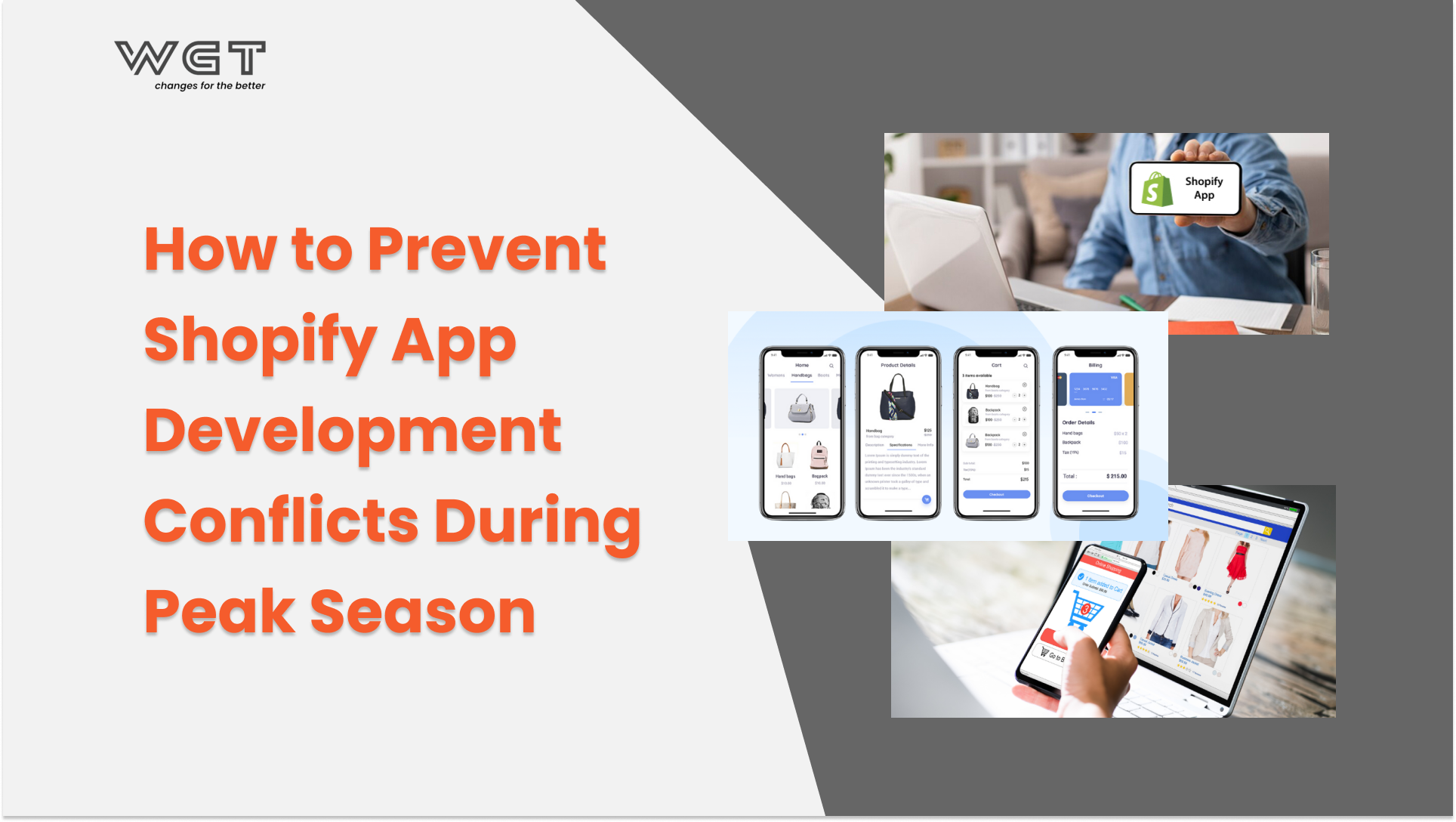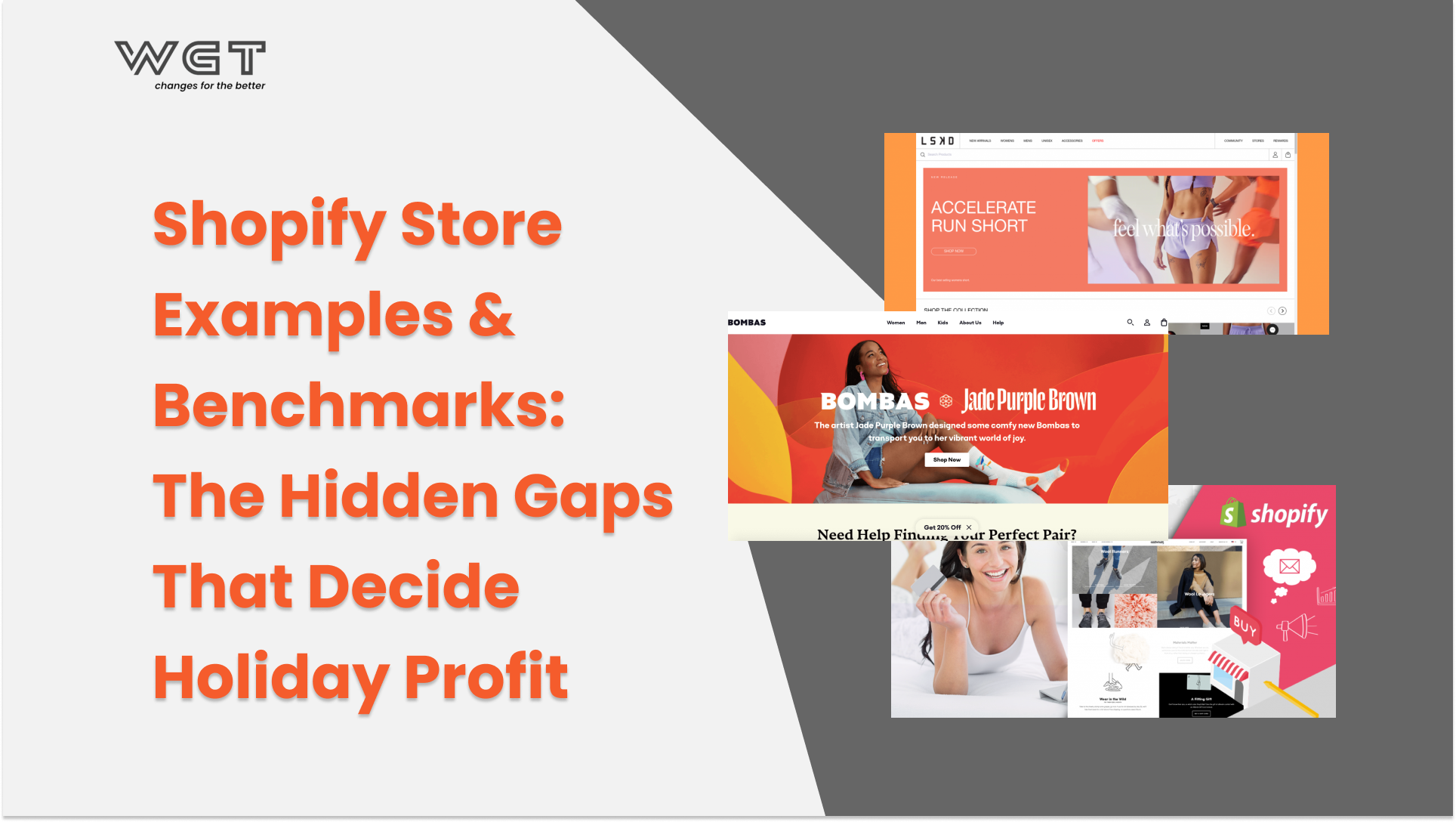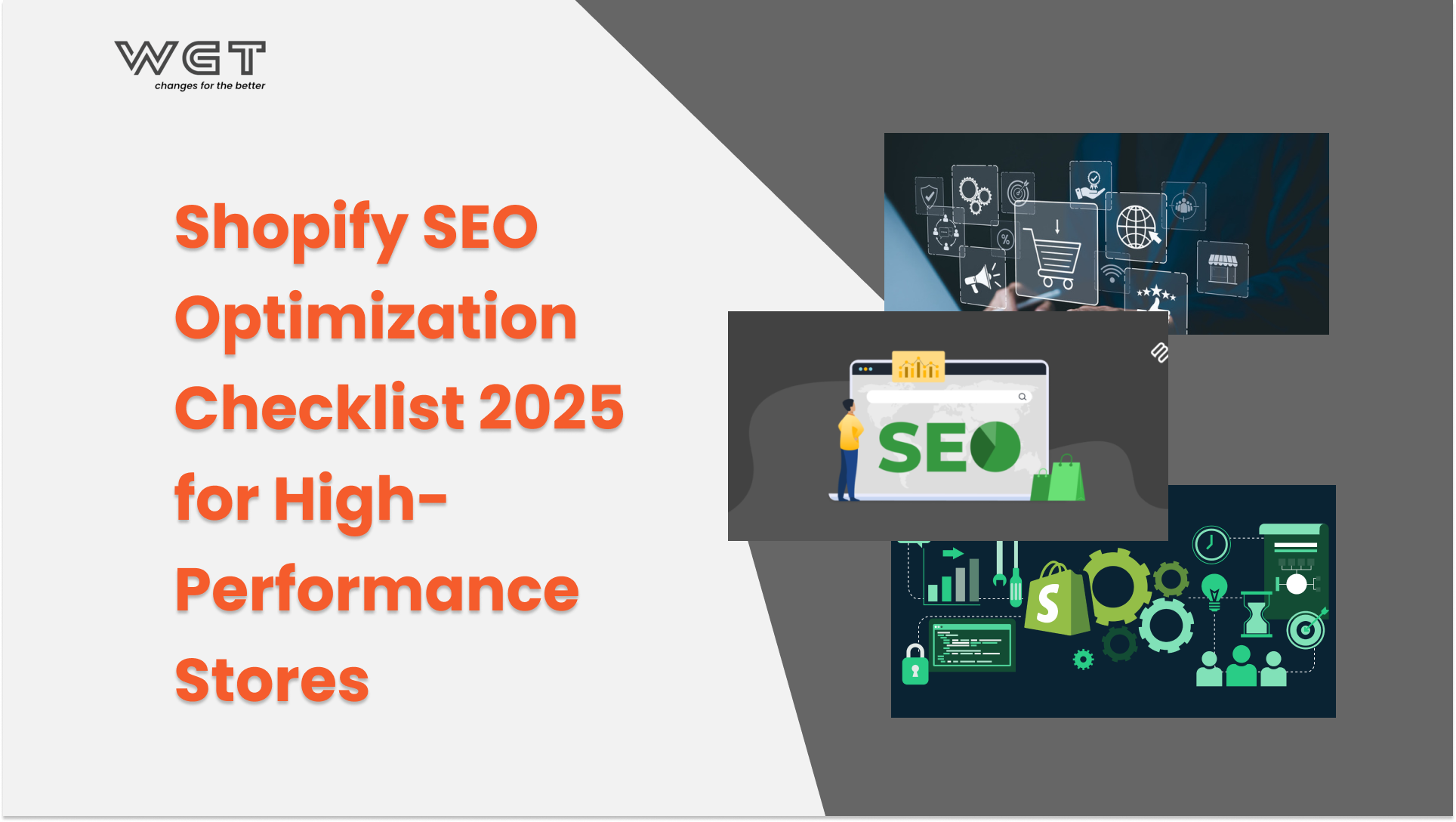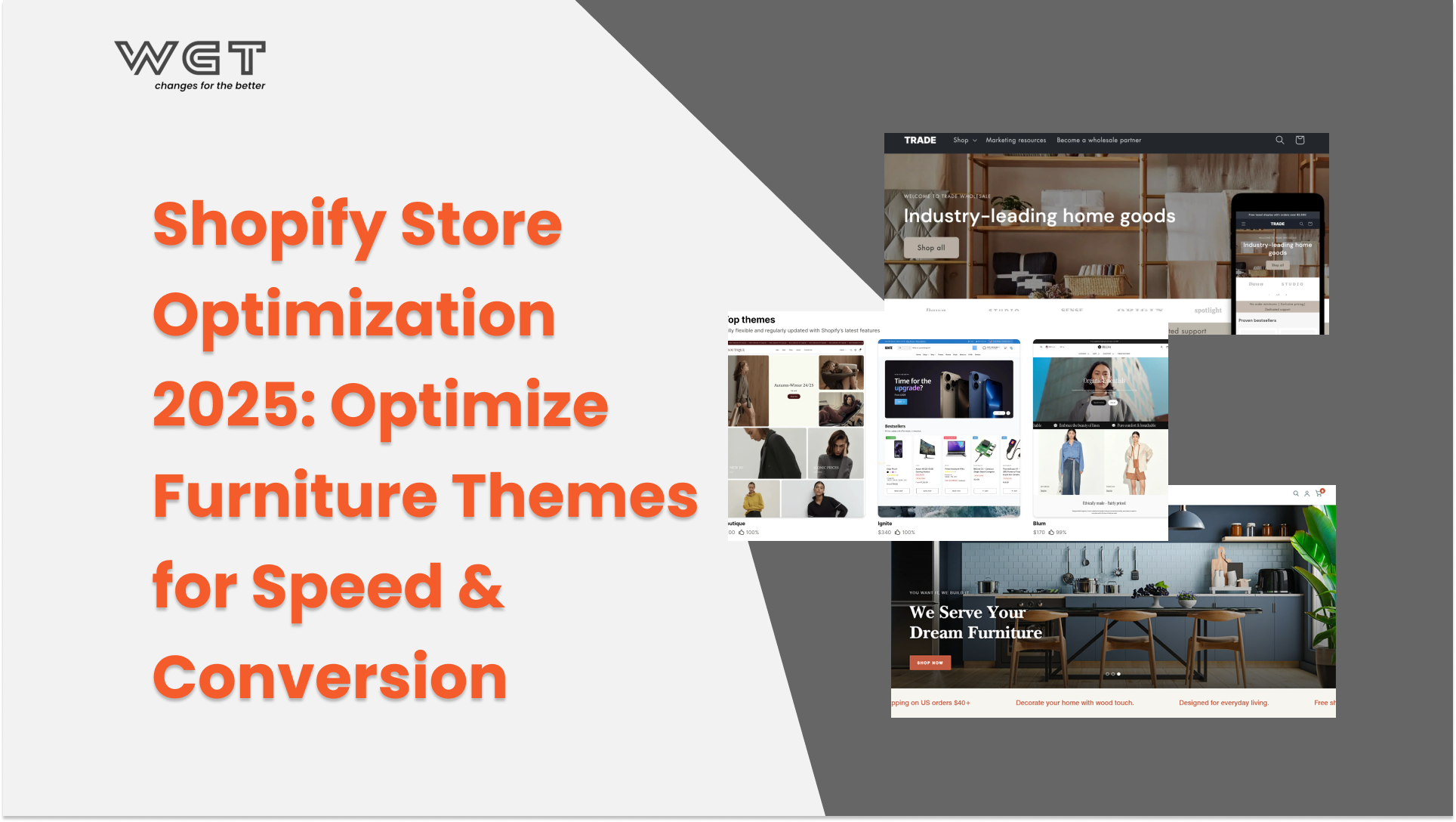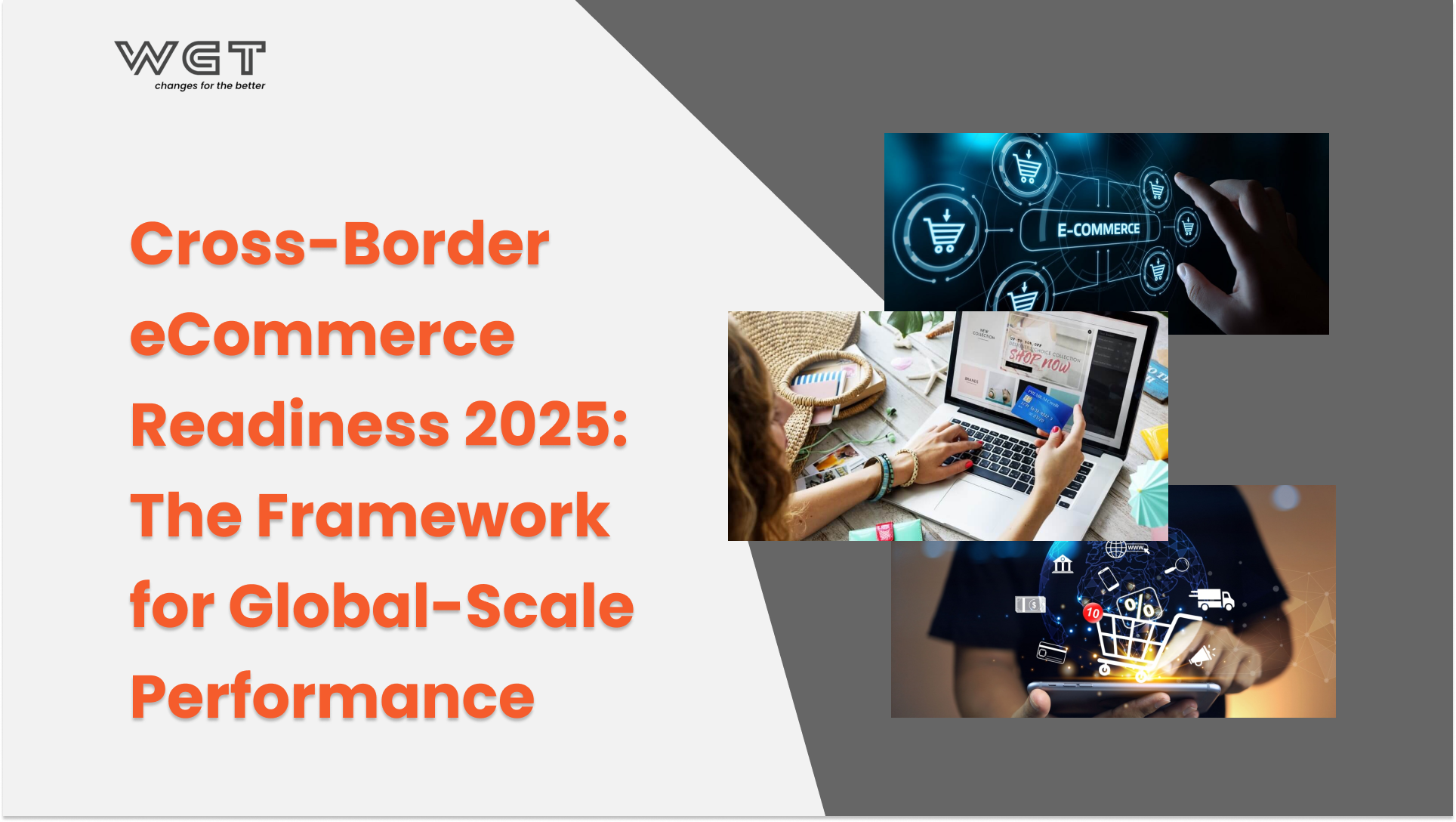As the eCommerce landscape grows more competitive in 2025, the platform you choose can directly impact your ability to scale, convert, and stay ahead of customer expectations. With major sale seasons like BFCM and the holidays approaching fast, now is the time to ensure your store is fast, flexible, and built to grow. Shopify for eCommerce remains the leading choice for modern brands looking to combine speed, scalability, and simplicity in one powerful platform.
In this guide, we’ll explore why Shopify continues to dominate in 2025 and how your business can leverage it to maximize performance and prepare for high-stakes growth seasons ahead.

The 2025 Landscape: Why Shopify for eCommerce Is More Critical Than Ever
In a rapidly evolving digital commerce world, the platform you choose can either accelerate your growth or quietly cap your potential. Shopify for eCommerce stands out not just as a store builder but as a performance-first ecosystem built to help brands respond to these exact challenges. Let’s break down what makes this moment and this platform so critical.
Customers Expect More in 2025: Are You Ready?
Today’s eCommerce customers demand experiences, not just products. With mobile traffic comprising nearly 72% of Shopify’s site visits, while 41% of users say they’ll abandon a site if it loads too slowly, expectations are sky-high. These figures indicate that merchants have to put extra effort into streamlining and optimizing every touchpoint with their customer to meet their day-by-day growing demand.
Shopify for eCommerce helps brands meet today’s rising user expectations by combining speed, responsiveness, and intelligent customization right out of the box. Its mobile-optimized themes are built to adapt seamlessly across devices, ensuring intuitive navigation and high-speed performance without custom coding.
Shopify’s cloud-based infrastructure and global CDN deliver consistently fast load times, even during high-traffic events. With the introduction of features like Shopify Magic and dynamic content blocks, merchants can personalize shopping experiences, from product recommendations to copy, using AI-driven tools.
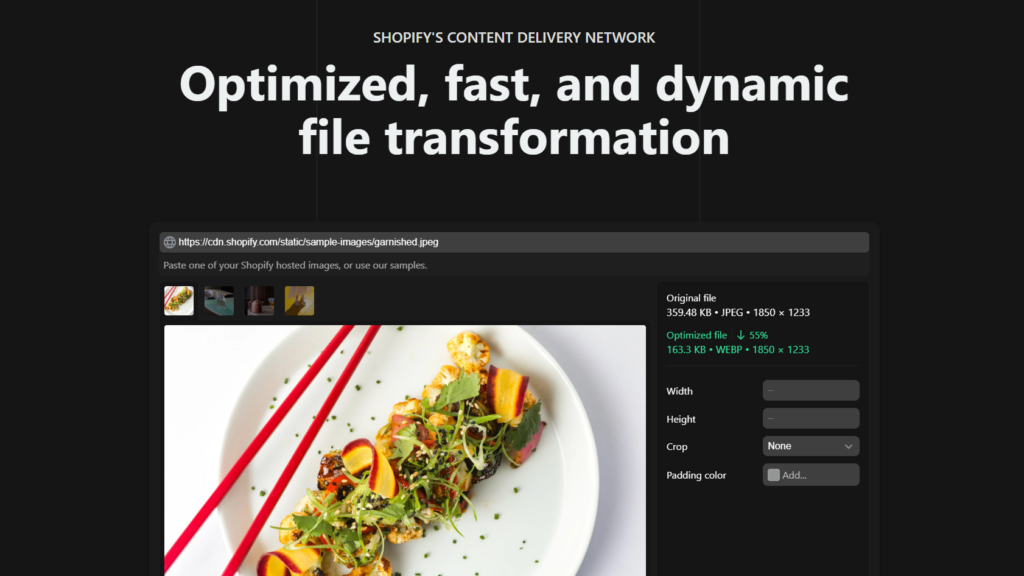
The platform’s native checkout is already optimized for conversions, and with Shopify Functions, it becomes fully customizable to match customer tags, cart values, or promotional logic, without breaking the frontend. Combined with built-in analytics and easy integration with tools like GA4 or Hotjar, Shopify empowers businesses to continuously monitor, test, and enhance the user experience. The result is a storefront that isn’t just responsive but fast, flexible, and delightfully effective.
Sale Seasons Are Bigger (and More Brutal) Than Ever.
Peak seasons are no longer seasonal; they’re omnipresent. Shopify stores processed a staggering $9.3B in BFCM sales alone in 2023, and monthly order volume averages 199M. In 2025, sale events from 11.11 to holiday mega-drops will push traffic even further. Shopify for eCommerce ensures your backend auto-scales and your content adjusts instantly, critical when “traffic” becomes “transactions.”
Shopify’s cloud-based architecture is designed to scale with demand. Whether you’re running a flash sale or a global campaign, the platform automatically adjusts to handle traffic spikes, processing over 10,000 checkouts per minute without compromising speed or uptime. That means you don’t need to worry about your site crashing the moment your ads go live.
With the latest Shopify Editions, Shopify Functions empowers merchants to modify core commerce logic like discounts, shipping rules, and checkout flows, without editing theme files. This flexibility is a game-changer during sale seasons when you want to run high-impact promotions that won’t break your site.

Brands Need Scalability to Survive (Not Just Thrive)
According to Shopify, eCommerce is booming globally, expected to reach $4.8T in 2025, and Shopify captures a notable 10.3% of that global market (rising to nearly 29% in the U.S.). With over 5M active stores worldwide, Shopify is built to handle scale: from fledgling startups to enterprise-level growth. Whether you’re pushing global expansion, launching new product lines, or growing during flash sales, Shopify for eCommerce provides the modular infrastructure and partner ecosystem to expand without rebuilds.
Shopify’s 8,000+ app ecosystem means you can add functionality as you grow, whether that’s CRM integration, ERP connectivity, loyalty programs, or subscription services. For more advanced operations, Shopify’s API-first architecture allows merchants to build fully customized workflows and integrate deeply with logistics, inventory, and marketing platforms.
In case you outgrow borders, thanks to Shopify Markets and Shopify Markets Pro, merchants can now sell globally from a single dashboard. Whether you’re entering a new region or launching localized experiences in multiple languages and currencies, Shopify enables frictionless international scale with built-in tax, duty, and pricing localization tools.
In 2025, Shopify Functions empowers brands to customize core commerce logic like shipping rates, discounts, and checkout behavior at scale and in real time. This ensures enterprise-level flexibility without bloating performance or increasing technical debt.
What Shopify Has Done Right for eCommerce Growth in 2025
As new platforms emerge and legacy systems try to modernize, Shopify continues to lead not by chasing trends but by setting them. With each product update and infrastructure enhancement, Shopify doubles down on helping merchants grow smarter, move faster, and compete at any scale. In 2025, Shopify continues to evolve as a platform built for scale, offering the flexibility, tools, and reliability that merchants need to grow from startup to enterprise without switching systems or patching together temporary fixes.
Shopify editions 2025: Built for innovation at speed
Shopify’s biannual Editions releases are no longer just product updates, they’re game changers. The Shopify Editions 2025 rollout introduced powerful new features like AI-generated content blocks, Shopify Functions for custom backend logic, and Shopify Magic, a native AI assistant for copywriting, recommendations, and product enrichment.
These tools allow merchants to iterate on their storefronts in real time without relying on heavy development cycles. Whether you’re personalizing a homepage, running flash promotions, or building a custom checkout logic for B2B or subscription-based products, Shopify gives you the flexibility to do it fast and do it right.

Speed, security, and performance major updates
In 2025, page speed and platform resilience are more than technical perks—they’re revenue drivers. With Shopify Editions 2025, performance is baked into the core experience through auto-scaling infrastructure, intelligent caching, and next-gen storefront frameworks.
The latest update includes:
- Oxygen: A lightning-fast hosting layer designed for custom storefronts, built for speed and developer agility.
- Hydrogen 2.0: Shopify’s React-based framework that enables faster dynamic content rendering and improved time-to-interactive metrics.
- Global CDN & edge delivery: Ensures fast load times no matter where your customers are shopping.
- 99.99% uptime guarantee & Level 1 PCI DSS compliance: Security and stability are no longer concerns, they’re now default settings.
Whether you’re handling global promotions, flash sales, or influencer-driven traffic spikes, Shopify’s infrastructure ensures your store loads instantly, scales automatically, and stays live under pressure.
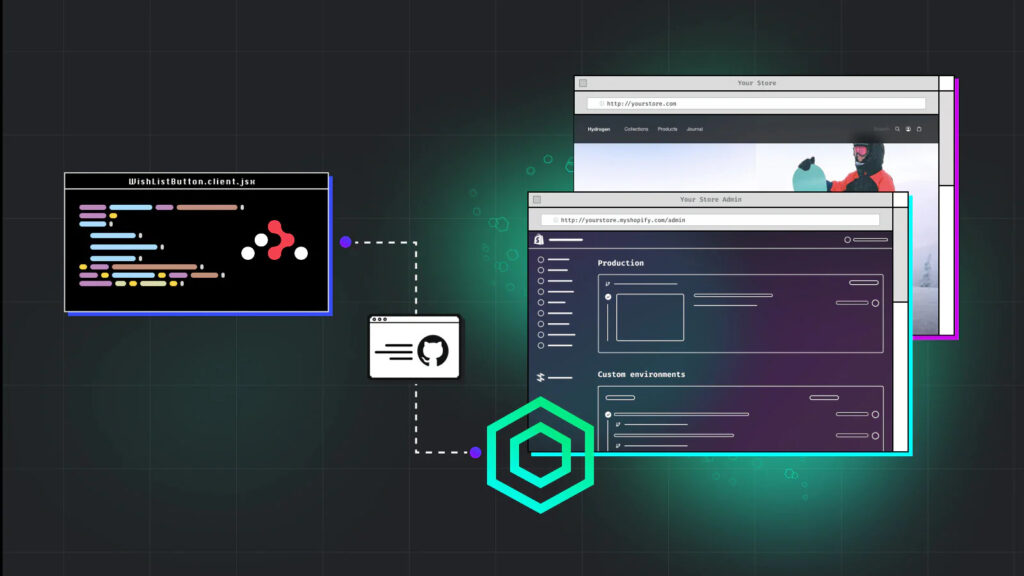
The Shopify ecosystem: smarter, faster, and built to grow
The 2025 Shopify ecosystem is more than just apps, it’s an entire growth stack designed for flexibility and future-proofing. With over 8,000 curated apps and deep integration capabilities, Shopify empowers brands to evolve without overhauling their architecture.
Recent ecosystem upgrades include:
- App Blocks & App Extensions: Modular tools that let you install and manage features directly within the theme editor.
- AI-Powered Merchandising (Shopify Magic): From product descriptions to personalized recommendations, Shopify now helps automate creative execution.
- Functions API: Brands can now fully customize checkout logic, shipping rules, loyalty programs, and more, without touching core theme files.
- Deep B2B tools and workflow automations: Built-in features support quotes, tiered pricing, company profiles, and purchasing workflows out of the box.
And thanks to Shopify’s API-first architecture, scaling with CRMs, ERPs, WMS platforms, and analytics tools is seamless. Whether you’re launching a new channel or automating backend ops, Shopify gives you the agility to build like an enterprise, without enterprise bloat.
Shopify vs Magento and WooCommerce: A 2025 Showdown
Choosing the right platform in 2025 isn’t just about features, it’s about long-term fit for your business model, your team, and your growth goals. With dozens of options available, the comparison often comes down to the three dominant players: Shopify, Magento (Adobe Commerce), and WooCommerce.
But when you dig into what matters most: speed, cost, scalability, and ecosystem, Shopify for eCommerce consistently proves why it’s the preferred choice for modern brands. Let’s break down how it stacks up in the areas that matter most.
Read this blog for more insight: Best eCommerce Platform Compared: How to Choose the Right One for Your Business
Time-to-Launch and Total Cost of Ownership
When it comes to building, or rebuilding, an eCommerce store in 2025, speed to market is everything. The longer it takes to go live, the more revenue opportunities are missed, especially with sale events approaching fast.
Shopify for eCommerce is unmatched in launch speed. A store can be up and running within days using its pre-built themes, drag-and-drop sections, and app integrations. In contrast:
- WooCommerce requires self-hosting, theme configuration, plugin installations, and constant maintenance.
- Magento (Adobe Commerce) demands a full development team and months of backend setup even before any frontend design begins.
When factoring in total cost of ownership (TCO), Shopify also leads. While Magento and WooCommerce might appear “cheaper” upfront (being open-source), their long-term costs add up: developer hours, hosting, security patches, plugin fees, and maintenance all contribute to operational overhead.
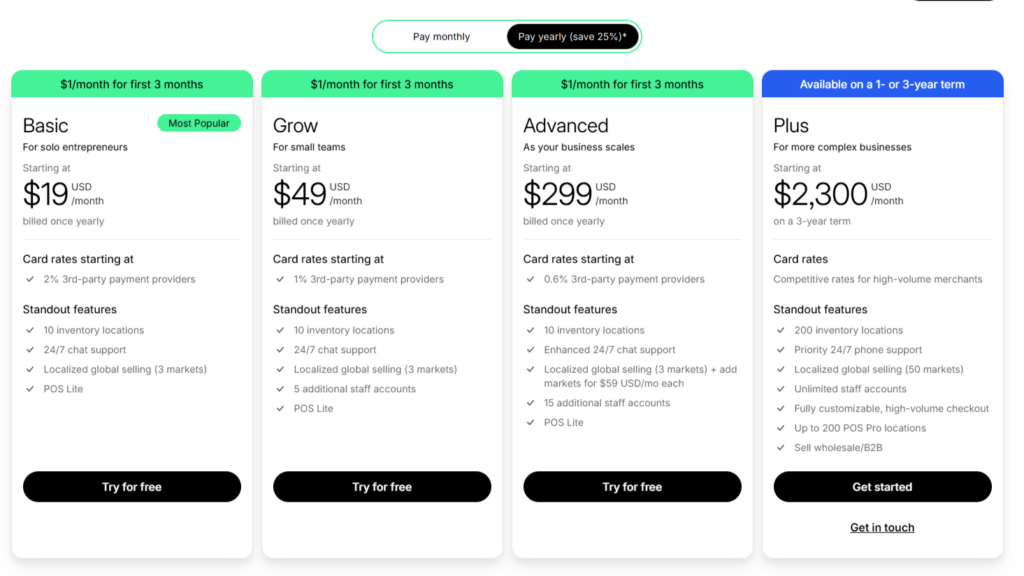
Community, Developers, and Partner Ecosystem
A platform is only as powerful as its people, and Shopify’s global network is one of its strongest assets. With over 43,000 Shopify Experts and partners worldwide, brands of all sizes have access to developers, designers, and consultants specialized in Shopify.
In contrast:
- Magento developers are more niche and costly, often tied to larger agencies.
- WooCommerce relies heavily on freelancers or generalist WordPress developers, great for small tweaks but riskier for complex scalability.
Shopify’s active forums, Slack channels, and partner directory give merchants a continuous support system. Whether it’s troubleshooting an app conflict or scaling internationally, there’s always a specialist who’s done it before.
Built-In Scalability for Growth-Focused Brands
As brands grow, so do their needs. Order volume increases. Fulfillment systems evolve. Product catalogs expand. And that’s where many platforms start to break, except Shopify.
With Shopify for eCommerce, scalability is built-in:
- Shopify Plus handles 10,000+ checkouts per minute
- Stores can expand into multiple storefronts, currencies, and languages without re-platforming
- Apps and integrations can be layered in as you grow, no need to rebuild architecture
By contrast, Magento may require server upgrades or performance tuning to handle traffic spikes. WooCommerce depends on hosting limits and manual optimization, putting more pressure on internal teams to maintain performance.
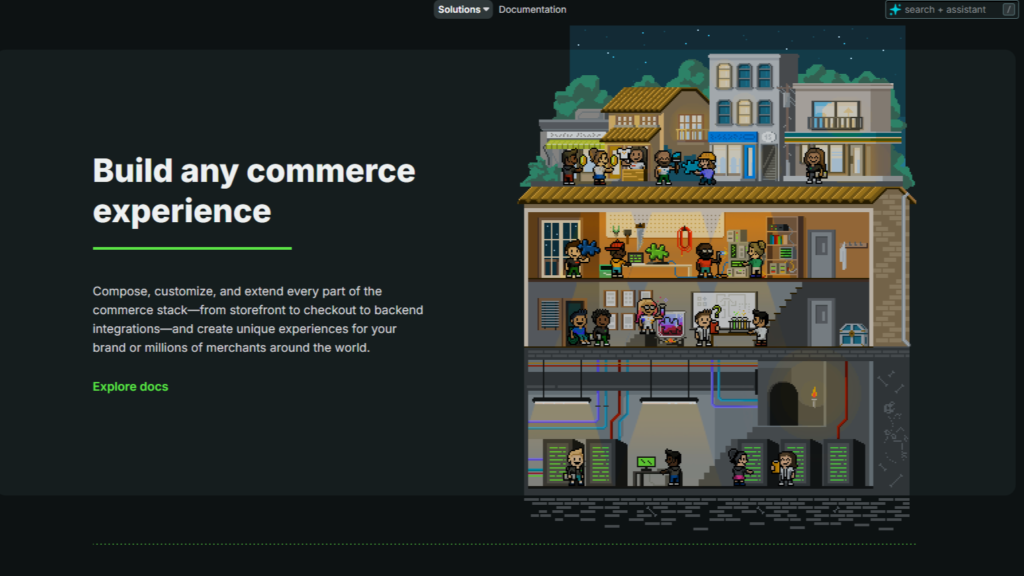
UX, SEO, and Integration Friendliness
Customers don’t just shop, they do much more. They scroll, click, hesitate, and compare. That means your storefront needs to perform, both technically and from a user experience standpoint.
Shopify delivers:
- Clean, mobile-first UX by default
- Fast page loads through built-in CDN
- Core Web Vitals-optimized themes
- Native SEO settings (meta tags, sitemaps, redirects, etc.)
WooCommerce can match this with the right plugins, but it requires manual setup and testing. Magento offers deep customization, but often at the cost of load times and technical SEO complexity.
On the integration side, Shopify for eCommerce excels with native API support and app-store connections. Whether you’re plugging into GA4, Klaviyo, HubSpot, or your ERP system, Shopify makes it modular, not manual.
Built to Scale: How Shopify Supports eCommerce Growth from Day One
Scaling isn’t just about adding more products or doubling your ad budget, it’s about building a store that can handle growth without friction. From startups aiming to reach their first 1,000 orders to global brands entering new markets, scalability is the true measure of a platform’s strength. Shopify for eCommerce is engineered with scale in mind, empowering you to grow faster, launch bigger, and operate smarter from day one. Here’s how.
Go Global Easily with Shopify’s Cross-Border Capabilities
IExpanding internationally in 2025 requires more than translation, it takes localized shopping experiences, seamless payments, and integrated duties handling. Shopify has strengthened its global commerce stack within the latest Editions to make this easier than ever.
In 2025, Shopify Payments now supports merchants across 39 countries, including recent additions like Mexico, Croatia, Estonia, and Poland, totaling coverage across six continents. Merchants in eligible regions can sell in 133+ currencies and use multi-currency payouts to receive revenue directly in domestic currency accounts, up to 8 bank accounts per store on Advanced and Plus plans
With Shopify Markets, merchants can:
- Set regional pricing and domains (e.g., .fr, .sg)
- Translate storefront content into local languages
- Automatically calculate duties and taxes and display them at checkout
- Display region-specific promos and product selections
This single-dashboard solution eliminates the need for managing separate country-based stores while delivering buyers a native-shopped feel across Southeast Asia, Europe, North America, and beyond.
Besides, the latest Editions now include a global tariff display and collection feature, allowing brands to show and collect duties at checkout with a transparent fee structure (reduced to 0.5% for Payments, or 1.5% for other gateways). Customers no longer face unexpected fees at delivery.
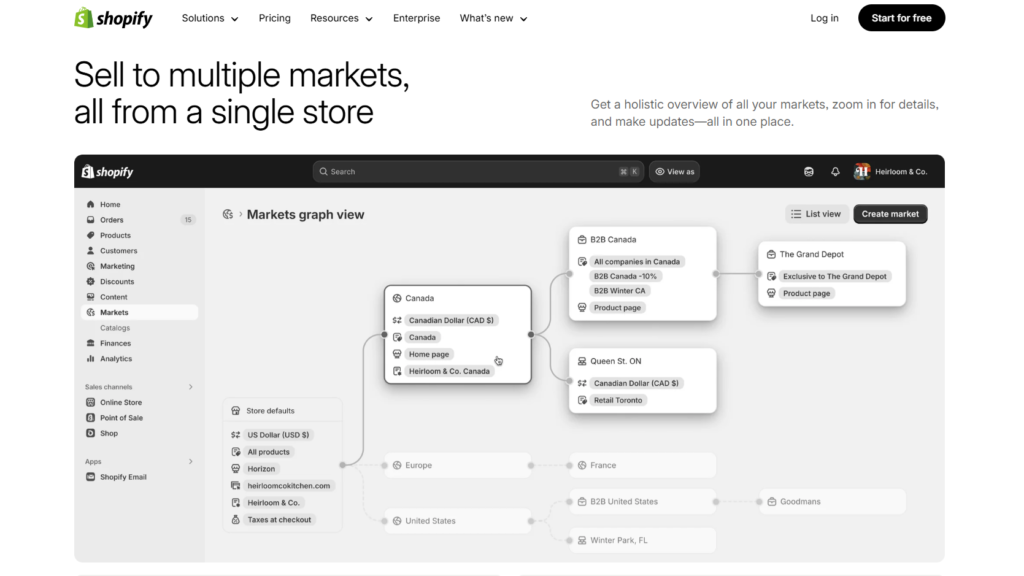
Integrate Anything: API-First Flexibility for Your Tech Stack
Modern eCommerce runs on data—and Shopify is built to play nice with the rest of your stack. Whether it’s syncing with your ERP, WMS, CRM, or building a custom sales dashboard, Shopify’s API-first infrastructure makes integration fast, reliable, and scalable.
Key advantages:
- REST and GraphQL APIs for every core object
- Webhooks for real-time automation
- 1,500+ pre-built integrations in the Shopify App Store
- Compatibility with tools like Zapier, Make, Alloy, and custom middleware
That means you can centralize operations, automate fulfillment, and personalize customer journeys without patching together workarounds or re-platforming as you grow.
Shopify Plus: Advanced Power, Simplified
For fast-growing and enterprise-level brands, Shopify Plus unlocks a higher tier of flexibility, performance, and automation—without the bloat of traditional enterprise platforms.
What makes it different?
- Customizable checkout: Edit checkout logic, upsells, and offers based on customer tags or cart value
- Launchpad for automation: Schedule flash sales, product releases, and campaigns with zero manual work
- Dedicated support: Access to Merchant Success Managers and priority API calls
And yet, unlike Magento or Salesforce Commerce, Shopify Plus remains easy to manage. Brands don’t need a dev team on standby just to run promotions or make design updates. That’s power when made practical.
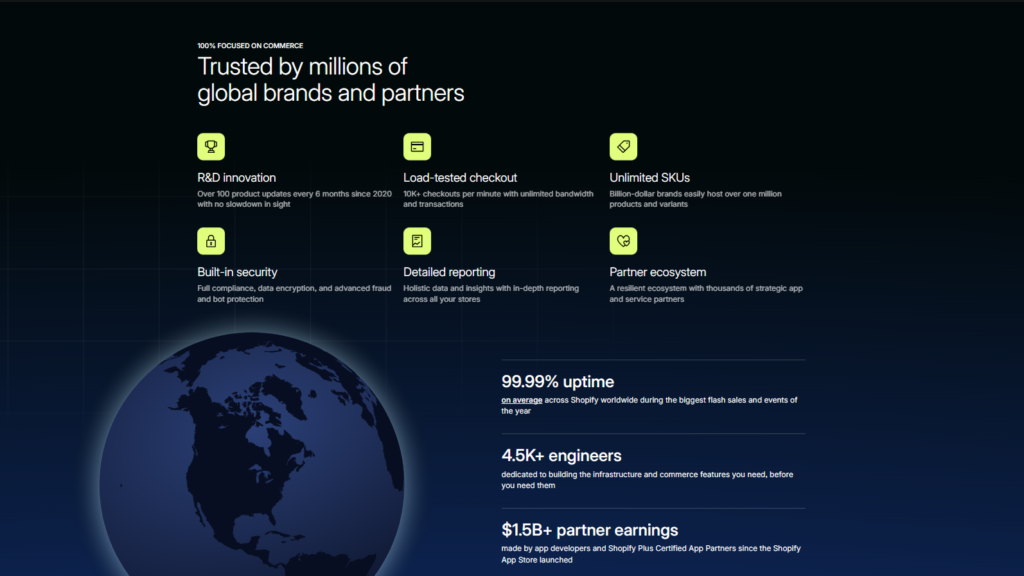
Real-World Wins: How Brands Scaled with Shopify for eCommerce Success
Tactics and theory only go so far. What truly matters is real-world impact. That’s why we’ve spotlighted brands that made the leap to Shopify and transformed their growth trajectory. These stories illustrate not just what’s possible when you choose Shopify for eCommerce, but why it matters for getting results you can measure.
CarBahn – Woo to Shopify Plus: Fast Track to Flexibility
Take CarBahn, an automotive parts retailer. They migrated from WooCommerce to Shopify Plus, embracing the platform’s built-in infrastructure, scalability, and checkout customization. The shift allowed them to scale operations and better serve their customers, using B2B features and integrated tools, without building complex workarounds. Today, CarBahn credits Shopify’s flexibility and simplicity with enabling them to grow efficiently in a competitive market
Key highlights:
- Streamlined migration with minimal data loss
- Faster launch of new parts and back-in-stock alerts
- Scalable architecture to support future growth
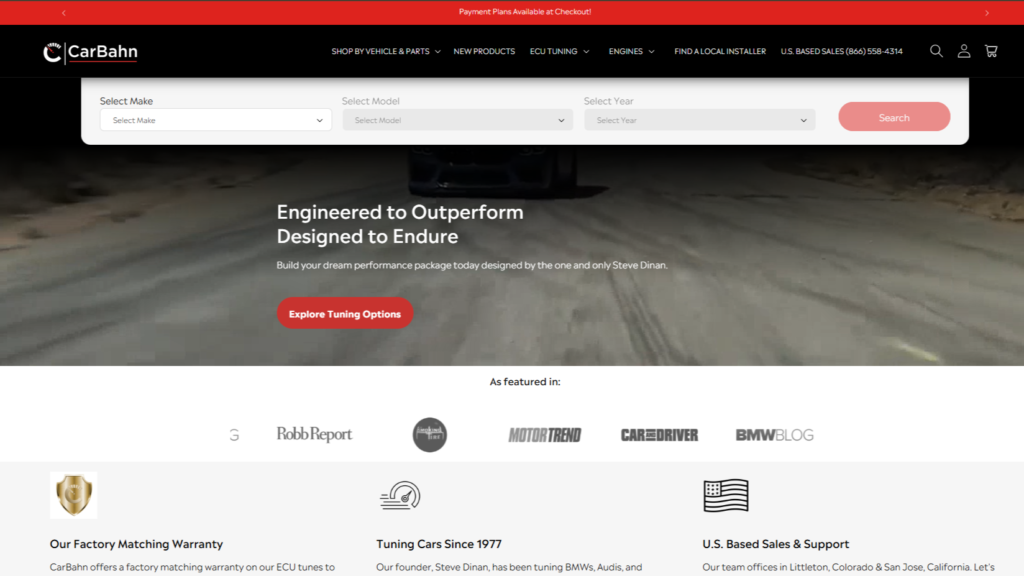
Mastermind Toys – How App Integration Accelerated Growth
Mastermind Toys, a Canadian toy retailer, partnered with a Shopify Plus agency to overhaul their omnichannel experience. By integrating Shopify POS, a robust loyalty program, enhanced product search and live chat, the brand achieved 286% higher conversion rates, a 3× increase in digital sales, and significantly improved customer service during peak seasons.
These integrations show how Shopify’s ecosystem, combined with a custom storefront experience, can turn seasonal traffic surges into sustained growth.

Key Outcomes: What Shopify Optimization Actually Delivers
Across both brands and many others, the numbers speak for themselves:
| Metric | Woo → Shopify | App-Driven Growth |
| Conversion Rate | +286% (Mastermind Toys) | +18% (est. with Shopify Functions) |
| Digital Sales Growth | 3× increase (Mastermind Toys) | Built-in scalability |
| Checkout Speed & Customization | Enabled B2B readiness (CarBahn) | Advanced promotions, auto-sell logic |
| Operational Efficiency | Simplified checkout, product launches | Unified commerce, POS, chat |
These are not one-off wins, they’re evidence of Shopify’s power when paired with strategy, integrations, and optimized storefronts. Whether you migrate, build custom apps, or integrate tools, Shopify for eCommerce delivers tangible results.
Look into more case studies by Wgentech here!
What You Need to Get Started With Shopify in 2025
Whether you’re migrating from an outdated platform, launching your first store, or looking to scale a struggling site, success on Shopify doesn’t happen by chance. It requires clarity on what to build, when to optimize, and who to trust. Here’s how to make a confident, strategic start with Shopify for eCommerce, before the next wave of traffic hits.
Should You Rebuild or Just Optimize?
Not every store needs a full rebuild, but every brand does need clarity. If your current platform is difficult to update, can’t support third-party integrations, or struggles with performance during high-traffic periods, it’s probably time to migrate.
However, if you’re already on Shopify and struggling with low conversion rates or mobile drop-offs, you might just need targeted website optimization—from UX tweaks to app audits.
Use this quick benchmark:
- Rebuild if you’re switching from WooCommerce, Magento, or a custom CMS
- Optimize if your Shopify store is live but underperforming
Tip: Even high-performing stores benefit from a seasonal performance sprint ahead of major sale periods.
Why an Expert Shopify Partner Accelerates Success
Shopify is powerful, but it’s not plug-and-play when your goals are big. From custom theme development and CRO (conversion rate optimization) to API integrations and backend architecture, having the right partner can save months of wasted effort and thousands in lost sales.
A Shopify Expert:
- Helps you avoid decision fatigue across themes, apps, and stacks
- Customizes experiences that actually convert across devices
- Ensures your store is built to scale with your growth, not limit it
At Wgentech, we’ve helped fast-growing brands across industries unlock the full potential of Shopify for eCommerce through development, optimization, and custom app solutions. Whether you’re preparing for Black Friday or entering new markets, we’re the team behind the scenes that makes the growth real.
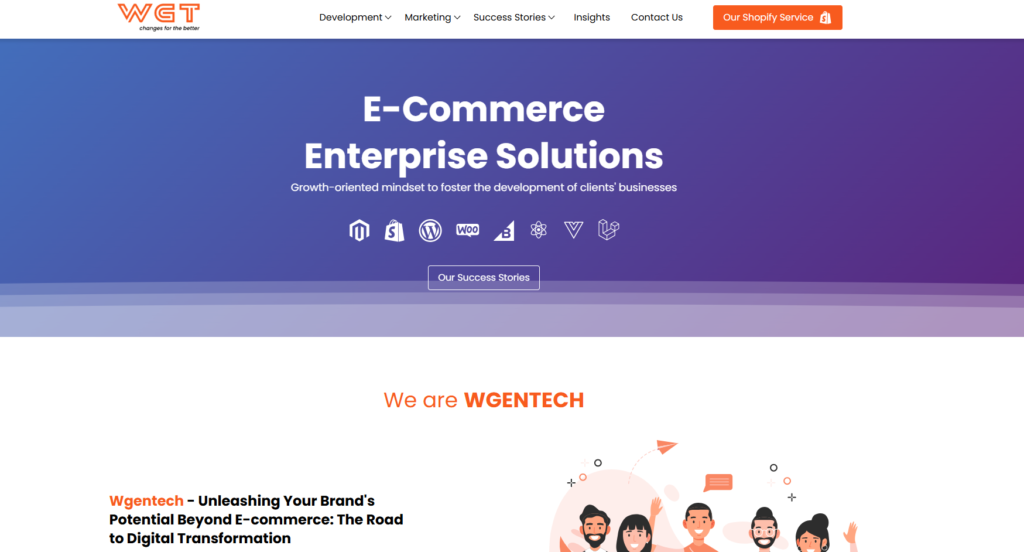
Free Consultation with Wgentech: Let’s Build Your Growth Plan
You’ve seen what Shopify can do. Now it’s time to make it work for your brand, with a plan that’s tailored, strategic, and ready for 2025’s challenges.
Our team will assess:
- Your current platform’s limitations
- What’s holding back your conversion or performance
- The best path forward (migrate, optimize, or rebuild)
From here, we’ll give you an actionable roadmap: whether you’re launching next quarter or preparing for Q4 sales. Book a free consultation with Wgentech for your Shopify growth plan. Let’s make your store fast, scalable, and sales-ready: Contact Us
Bottom line
Shopify continues to prove why it’s the leading platform for growth-minded eCommerce brands in 2025. With rapid innovation through Shopify Editions, unmatched scalability through Shopify Plus, and a thriving ecosystem of integrations and developers, it delivers everything modern merchants need: speed, flexibility, and global reach. Whether you’re launching, migrating, or scaling, Shopify for eCommerce offers a future-proof foundation for success.
But timing matters. With major sale seasons fast approaching, the brands that win will be those that prepare now, not later. At Wgentech, we help ambitious businesses turn their Shopify stores into performance engines through eCommerce development, Website optimization, Data migration, and Custom app solutions tailored to scale. Let’s build your growth plan before the next wave of traffic arrives.




